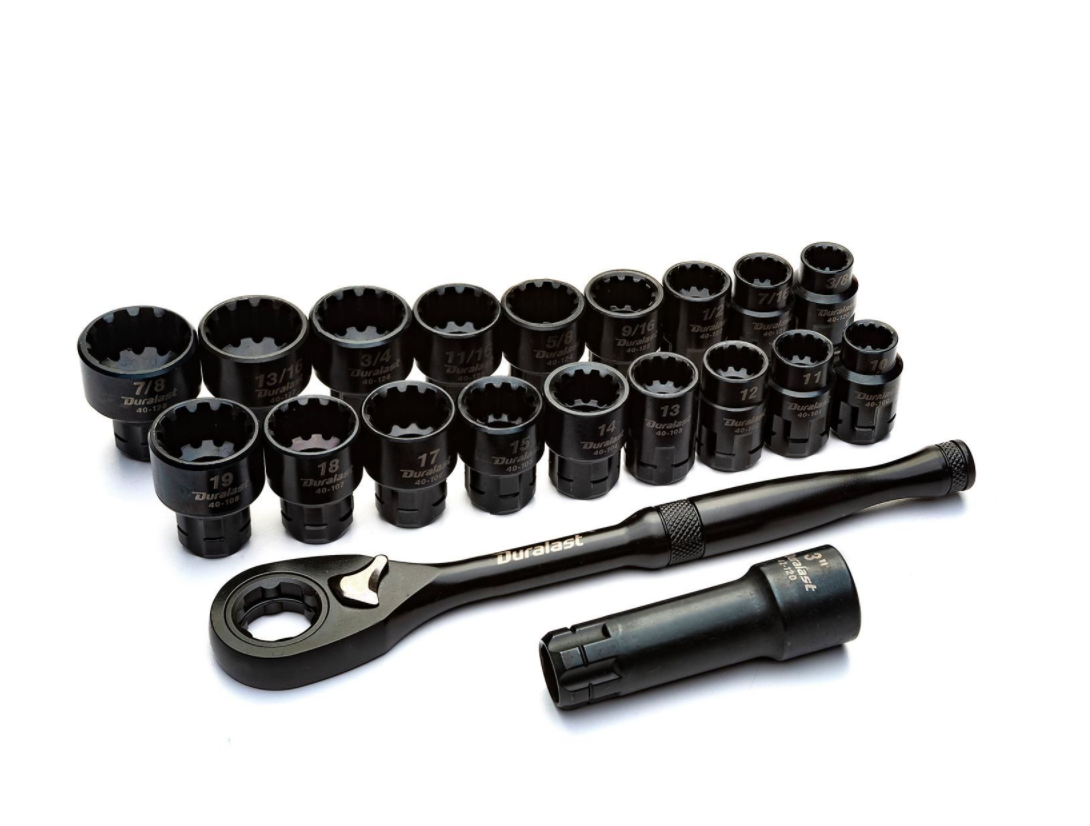The last turn on any wrench, the one where the socket won’t turn anymore is so gratifying.
The sense of accomplishment, security, and optimism for whatever source of utility ahead is pretty high at the moment. It could be the hub on your tire or the last fixture on a playset, but that last turn, and the work towards that moment is worth every ounce of effort.
I’ve been trying to put into words a concept for quite some time that revolves around efficiency when going to market and tightening sockets is one that has come to mind.
At every key stage of a growing business, best described by David Skok in one of my favorite presentations, sockets are being tightened every day by entrepreneurs.
In the last two weeks I’ve had conversations with entrepreneurs at each phase Skok enumerates: product/market fit, a repeatable, scalable and profitable growth model, and then scale.
In each case, entrepreneurs are trying to figure out how to maximize their growth with the resources they have at the current snapshot of their respective market. The market being the individual market each entrepreneur is building in. The macro-market, discussed with seemingly more frequency, is more out of their control.
In all three stages of the business, every entrepreneur is seeking ways to tighten sockets.
What does tightening sockets mean?
In the most simple terms, it is when an entrepreneur is looking to maximize efficiency with their current resources while still optimizing for growth.
For example, in the product/market fit category, there are not only 10 paying customers, but those paying customers are truly using the product, receiving demonstrated ROI, and telling others in their industry about it. Here are favorite signals of product/market fit. A tight socket at the product-market fit stage has raving customers demanding a clear set of similar features, paired with a tight communication loop between customer and company…and prospects are not pushing sales meetings. Prospects are eager for the call (what a position to be in)!
What do loose sockets look like, where the wheel may tumble off going down the highway or the play structure may sway with extra weight?
The product is being oversold, underutilized, and the market is not pulling the entrepreneur. A deal, or 10 may get sold, but there is little actual value or adoption of the product.
In Skok’s second stage, an entrepreneur must seek the repeatable, scalable and profitable growth model.
Once tight sockets are created during the P/M fit stage, a company grows past the product-market fit stage and evolves into Skok’s second stage of becoming a repeatable, economical engine.
Fortunately, studied and proven metrics at this stage make it clearer to understand how tight the sockets of a company are at that moment in time. There is likely a year or two of data where LTV/CAC ratios, net retention, pay back periods, ACV, length of sales cycles, and efficiency ratios can be analyzed. These are good snapshots showing the past, but do not provide much clarity towards generating tighter sockets in the future – hopefully in a rapidly growing and definitely shifting market. For example, at this stage of the business, let’s say over $1M ARR, a company with tight sockets will know:
- what they are (and what they aren’t)
- who they sell to (and who they don’t)
- what opinionated message they are delivering to the market
- which customers achieve maximize value (and utility) from the product
- sales messaging is crisp and clear for each role
- customer success delivers real value add for the customer base producing up-sells
- product alignment is consistent across the burgeoning engineering team
Loose sockets here are the inverse.
Lastly, back to Skoks’ third stage: scaling – the market is ripening, competitors have staked their presence, and the culture is baked.
Tight sockets at the scale stage revolve around maximizing utility of every dollar invested. What is the difference between, one dollar invested to get five out versus one dollar invested to get ten out? The delta is dependent on how tight the sockets are at this stage of the business.
Indicators of a tight socket includes most importantly a healthy and vibrant culture that generates a flywheel of applicants. Candidates want to work at that company due to reputation and execution. Burn in relation to cash in the bank is healthy…along with major saas metrics. The company’s vision is clear. The culture is maintained and scaled in a healthy manner.
The tighter sockets at each stage the stronger the company will be in the late stage and public markets because with every S-1 filing, the gates to the castle are opened.
As is with any early stage company, the specific market will determine so much, but keeping sockets tight at every stage can prepare keep everyone prepared for any type of road ahead.

